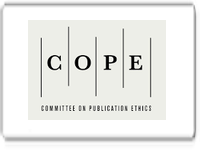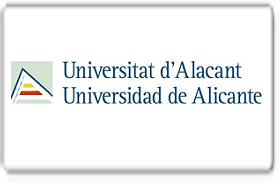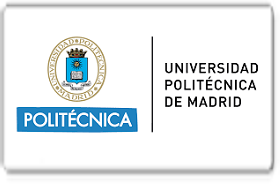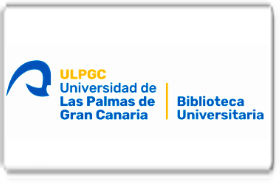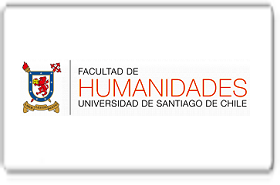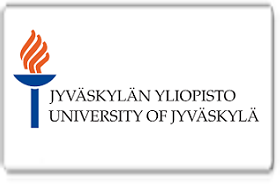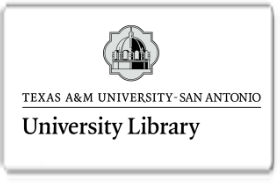Enfoque Diagnostico del Síndrome de Embolia Grasa, Una Revisión Bibliográfica
DOI:
https://doi.org/10.56048/MQR20225.8.1.2024.1996-2011Palabras clave:
Síndrome; diagnostico; embolia; grasaResumen
Introducción: El síndrome de embolia grasa (SEG) es una condición clínica mal definida atribuida a la entrada de émbolos grasos en la circulación. El SEG ocurre principalmente como consecuencia de un traumatismo ortopédico, y con menos frecuencia a otras condiciones no traumáticas (pancreatitis, anemia de células falciformes, osteomielitis, diabetes mellitus, enfermedad del hígado graso) o después de una intervención iatrogénica (terapia prolongada con corticoides, liposucción).
Objetivo: El objetivo de este trabajo es conocer sobre la embolia grasa (EG) y el SEG, y presentar una revisión narrativa enfocada a su diagnóstico abarcando sus definiciones, causas, presentación y tratamiento.
Materiales y métodos: Revisión y elección de artículos científicos de diferentes bases de datos (PUBMED, Scopus y MedLine), en inglés. Se incluyeron 26 artículos.
Discusión: A pesar de la creciente cantidad de literatura que describe la aparición de SEG, sigue existiendo una incertidumbre clínica significativa con respecto a su diagnóstico, prevención y tratamiento.
Conclusiones: Una comprensión más detallada de la patogénesis de este raro síndrome facilitará estrategias específicas para la prevención y el tratamiento. Se necesitan más ensayos clínicos prospectivos de alta calidad para aclarar el papel del tratamiento farmacológico en el SEG.
Descargas
Métricas
Cited
DOI: 10.56048![]()
Citas
Allardyce, D., Meek, R., Woodruff, B., Cassim, M., & Ellis, D. (1974). Increasing our knowledge of the pathogenesis of fat embolism: a prospective study of 43 patients with fractured femoral shafts. J Trauma, 14(11), 955-962. Recuperado el 19 de Sep de 2023, de https://journals.lww.com/jtrauma/Citation/1974/11000/Increasing_Our_Knowledge_of_the_Pathogenesis_of.8.aspx
Bederman, S., Bhandari, M, McKee, M., & Schemitsch, E. (2009). Do corticosteroids reduce the risk of fat embolism syndrome in patients with long-bone fractures? A meta-analysis. Can J Surg, 52(5), 386-393. Recuperado el 21 de Sep de 2023
Bone, L., Johnson, K., Weigelt, J., & Scheinberg, R. (1989). Early versus delayed stabilization of femoral fractures. A prospective randomized study. J Bone Joint Surg Am, 71(3), 336-340. Recuperado el 21 de Sep de 2023
Bulger, E., Smith, D., Maier, R., & Jurkovich, G. (1997). Fat embolism syndrome. A 10-year review. Arch Surg, 132(4), 435-439. doi:10.1001/archsurg.1997.01430280109019
Butteriss, D., Mahad, D., Soh, C., Walls, T., Weir, D., & Birchall, D. (2006). Reversible cytotoxic cerebral edema in cerebral fat embolism. Am J Neuroradiol, 27(3), 620-623. Recuperado el 21 de Sep de 2023
Chastre, J., Fagon, J., & Soler, P. (1990). Bronchoalveolar lavage for rapid diagnosis of the fat embolism syndrome in trauma patients. Ann Intern Med, 113(8), 583-588. doi:10.7326/0003-4819-113-8-583
Christie, J., Robinson, CM, Pell, A., McBirnie, J., & Burnett, R. (1995). Transcardiac echocardiography during invasive intramedullary procedures. J Bone Joint Surg Br, 77(3), 450-455. doi:10.1302/0301-620X.77B3.7744935
Fabian, T., Hoots, A., Stanford, D., Patterson, C., & Mangiante, E. (1990). Fat embolism syndrome: prospective evaluation in 92 fracture patients. Crit Care Med, 18(1), 42-46. Recuperado el 20 de Sep de 2023
Fletcher, A., Molteni, A., Ponnapureddy, R., Patel, C., Pluym, M., & Poisner, A. (2017). The renin inhibitor aliskiren protects rat lungs from the histopathologic effects of fat embolism. J Trauma Acute Care Surg, 82(2), 338-344. doi:10.1097/TA.0000000000001278
Hulman, G. (May de 1995). The pathogenesis of fat embolism. J Pathol, 176(1), 3-9. doi:10.1002/path.1711760103. PMID: 7616354.
Husebye, E., Lyberg, T., & Røise, O. (2007). Bone marrow fat in the circulation: clinical entities and pathophysiological mechanisms. Injury, 38(10), S8-S18. doi:10.1016/j.injury.2006.08.036
Jacobson, D., Terrence, C., & Reinmuth, O. (1986). The neurologic manifestations of fat embolism. Neurology, 36(6), 847–851. doi:10.1212/wnl.36.6.847
Kwiatt, M., & Seamon, M. (2013). Fat embolism syndrome. Int J Crit Illn Inj Sci, 3(1), 64-68. doi:10.4103/2229-5151.109426
Lewis, A., & Pappas, A. (1969). Experimental fat embolism: evaluation of treatment with low molecular weight dextran. J Trauma, 9(1), 49-55. Recuperado el 21 de Sep de 2023
Lindeque, B., Schoeman, H., Dommisse, G., Boeyens, M., & Vlok, A. (1987). Fat embolism and the fat embolism syndrome. A double-blind therapeutic study. J Bone Joint Surg Br, 69(1), 128-131. doi:10.1302/0301-620X.69B1.3818718
Lindeque, B., Schoeman, H., Dommisse, G., Boeyens, M., & Vlok, A. (1987). Fat embolism and the fat embolism syndrome. A double-blind therapeutic study. J Bone Joint Surg Br, 69(1), 128-131. doi:10.1302/0301-620X.69B1.3818718
Mellor, A., & Soni, N. (2001). Fat embolism. Anaesthesia, 56(2), 145-154. doi:10.1046/j.1365-2044.2001.01724.x
Newbigin, K., Souza, C., & Torres, C. (2016). Fat embolism syndrome: State-of-the-art review focused on pulmonary imaging findings. Respir Med, 113, 93-100. doi:10.1016/j.rmed.2016.01.018
Nolte, W., Olofsson, T., Scherstén, T., & Lewis, D. (1974). Evaluation of the Gurd test for fat embolism. J Bone Joint Surg Br, 56B(3), 417-420. Recuperado el 21 de Sep de 2023
O'Brien, B., Harris, I., Beckman, T., Reed, D., & Cook, D. (2014;). Standards for reporting qualitative research: a synthesis of recommendations. Acad Med, 89(9), 1245-1251. doi:10.1097/ACM.0000000000000388
Poisner, A., Herndon, B., Bass, D., Jain, A., Fletcher, A., & Molteni, A. (2014). Losartan protects the lung from chronic cellular damage induced by fat embolism (LB512). The FASEB Journal, 28(1), LB512. doi:10.1096/fasebj.28.1_supplement.lb512
Riseborough, E., & Herndon, J. (1976). Alterations in pulmonary function, coagulation and fat metabolism in patients with fractures of the lower limbs. Clin Orthop Relat Res, 115, 248–67. Recuperado el 21 de Sep de 2023
Roger, N., Xaubet, A., & Agustí, C. (1995). Role of bronchoalveolar lavage in the diagnosis of fat embolism syndrome. Eur Respir J, 8(8), 1275-1280. doi:10.1183/09031936.95.08081275
Ross, A. (1969). The value of serum lipase estimations in the fat embolism syndrome. Surgery, 65(2), 271-273. Recuperado el 21 de Sep de 2023
Sage, R., & Tudor, R. (1958). Treatment of fat embolism with heparin. Br Med J, 1(5080), 1160-1161. doi:10.1136/bmj.1.5080.1160
Schonfeld, S., Ploysongsang, Y., & DiLisio, R. (1998). Fat embolism prophylaxis with corticosteroids. A prospective study in high-risk patients. Ann Intern Med, 99(4), 438-443. doi:10.7326/0003-4819-99-4-438
Scopa, M., Magatti, M., & Rossitto, P. (1994). Neurologic symptoms in fat embolism syndrome: case report. J Trauma, 36(6), 906-908. doi:10.1097/00005373-199406000-00030
Stein, P., Yaekoub, A., Matta, F., & Kleerekoper, M. (2008). Fat embolism syndrome. Am J Med Sci, 336(6), 472-477. doi:10.1097/MAJ.0b013e318172f5d2
Styles, L., Schalkwijk, C., Aarsman, A., Vichinsky, E., Lubin, B., & Kuypers, F. (1996). Phospholipase A2 levels in acute chest syndrome of sickle cell disease. Blood, 87(6), 2573–8. Recuperado el 21 de Sep de 2023
Tzioupis, C., & Peter, V. (2011). Fat embolism syndrome: what have we learned over the years? Trauma, 13(4), 259-281. doi:10.1177/1460408610396026
Vedrinne, J., Guillaume, C., Gagnieu, M., Gratadour, P., Fleuret, C., & Motin, J. (1992). Bronchoalveolar lavage in trauma patients for diagnosis of fat embolism syndrome. Chest, 102(5), 1323-1327. doi:10.1378/chest.102.5.1323
Walshe CM, C. J. (2007). Cerebral fat embolism syndrome causing brain death after long-bone fractures and acetazolamide therapy. Crit Care Resusc, 9(2), 184-186. Recuperado el 21 de Sep de 2023
White, T., Petrisor, B., & Bhandari, M. (2006). Prevention of fat embolism syndrome. Injury, 37(4), S59-S67. doi:10.1016/j.injury.2006.08.041
Publicado
Cómo citar
Número
Sección
Categorías
Licencia

Esta obra está bajo una licencia internacional Creative Commons Atribución 4.0.
Los autores se comprometen a respetar la información académica de otros autores, y a ceder los derechos de autor a la Revista MQRInvestigar, para que el artículo pueda ser editado, publicado y distribuido. El contenido de los artículos científicos y de las publicaciones que aparecen en la revista es responsabilidad exclusiva de sus autores. La distribución de los artículos publicados se realiza bajo una licencia 


















